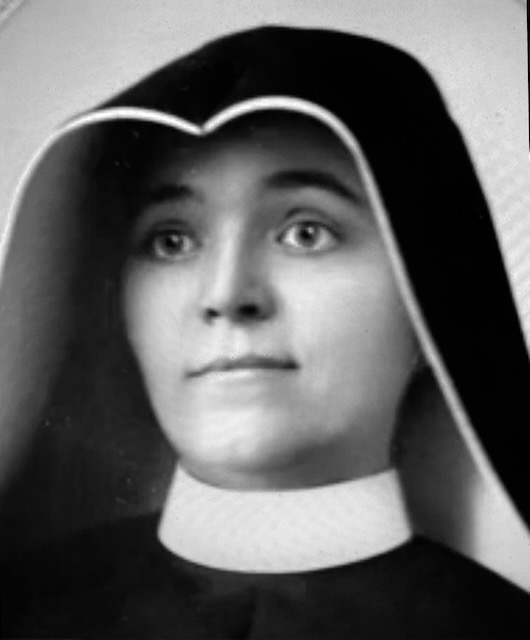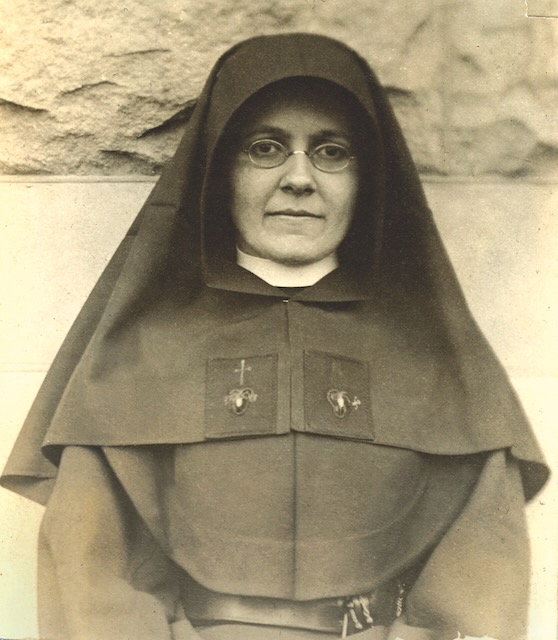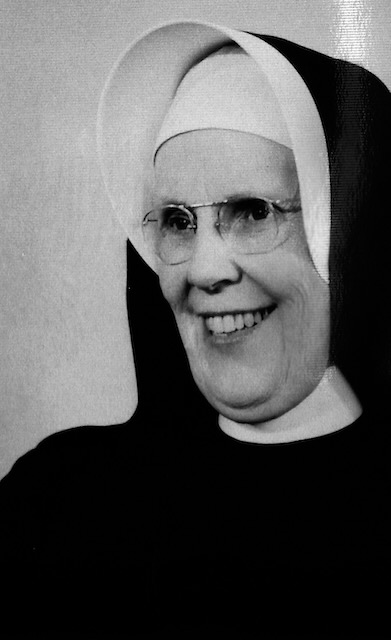Loretto education since 1812: A tradition of excellence
Posted on September 22, 2023, by Loretto Community
By Carolyn Dunbar, Loretto Magazine editor, 2008-2018, originally published in summer 2010
History relates that at Hardin’s Creek in Kentucky in early 1812, 30-year-old Mary Rhodes began teaching her brother’s children and some of the local girls. As her class grew, Christina Stuart and Nancy Havern joined her in the work. The three women approached Fr. Charles Nerinckx to express their interest in forming a new order. On April 25, 1812, the Little Society of the Friends of Mary under the Cross of Jesus (later shortened to Sisters of Loretto at the Foot of the Cross), the first Catholic order begun in the United States, became official. Shortly, they were joined by others, and the order began to grow. By 1852, Sisters of Loretto were traveling to New Mexico to teach, followed in the 1860s by Colorado and in the 1870s, Texas. Later, their reach was global, as they opened schools in China, South America, Pakistan.
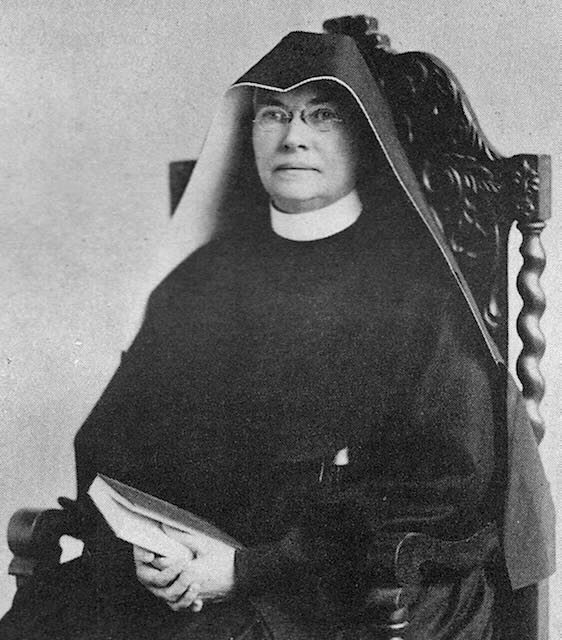
Photo courtesy of Loretto Archives
The turn of the 20th century brought no discernible pause in the Sisters of Loretto’s ongoing educational mission. The new century followed a remarkable 70-year period from 1830 to 1900 when Loretto founded 99 schools in areas mirroring the country’s westward drive to the Pacific Coast.
During the next 60 years, Loretto would found an additional 107 schools — including two colleges. They would continue the mission in Santa Fe, N.M., and embark on an extraordinary adventure to China in 1923, providing education in Hanyang and Shanghai before the Communist Revolution and resulting upheaval would prompt their departure in 1952. Eight years later, the Catholic Church would urgently call for educators in South America, and Loretto responded, opening a school in Bolivia and teaching at a Jesuit school in Peru.
From their base at the Motherhouse in Kentucky, the sisters spanned the American continent from 1900 to 1960, founding 61 new schools in 15 states, including Virginia, Alabama, Missouri, Illinois, Ohio, Oklahoma, Texas, Nebraska, Kansas, Colorado, Wyoming, Arizona, New Mexico and California.
It was a period of tremendous growth that stretched the sisters and their resources to the limit. Each foundation has a fascinating tale of its own, with challenges and successes unique to that school, the local culture and the political and spiritual environment. From tiny settlements to bustling urban centers, Loretto built buildings and curricula to meet the needs wherever they were called to teach.
Apostolate to educate
“Apostolate” is an old but familiar word to many Catholics. It literally means the mission, office or duties of an apostle. It has since broadened to indicate the purpose of a group dedicated to the propagation of a certain religion or doctrine. In the case of the Sisters of Loretto, their original apostolate was to educate children. In fact, the early rule said, “… all exertions shall be made to make and have as many [sisters] able for this important business as possible.”
Florence Wolff SL wrote in her “History Sampler” in 1986, “From the beginning, the Sisters of Loretto engaged in teaching as the primary focus of their apostolate. In 1834 they began establishing not only elementary schools, but also academies, which were the popular mode of higher education for women during the entire 19th and early 20th centuries. These academies offered a broad liberal arts curriculum which included history, science, languages, philosophy, religion, art, music and plain and fancy sewing.”
It was a natural fit for Loretto when in 1884 the Council of Baltimore called for every Catholic child in America to be enrolled in a Catholic school whenever and wherever possible. Loretto responded to this idea quite literally. With the Council’s directive as impetus, parochial education in the United States began to grow and flourish. Many other teaching orders met the challenge, too. Religious vocations increased, and with them, the pool of available Catholic school teachers grew. Loretto continued to move across the country, staffing schools and influencing young lives.
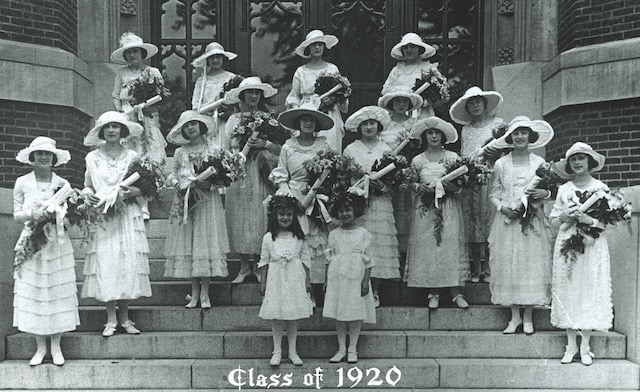
Photo courtesy of Loretto Archives
Some of these sister presidents have been guiding enterprises of institutions whose balance sheets would make many businessmen stagger. The planning and decision-making that have gone into the conduct of the business of a great college have been incalculable and they have been directed by a woman.
Mary Luke Tobin SL, on the occasion of Frances Marie Walsh SL’s retirement as president of Loretto Heights College in Denver in 1964. (See photo of Frances Marie near the end of this story; see feature on Mary Luke here)
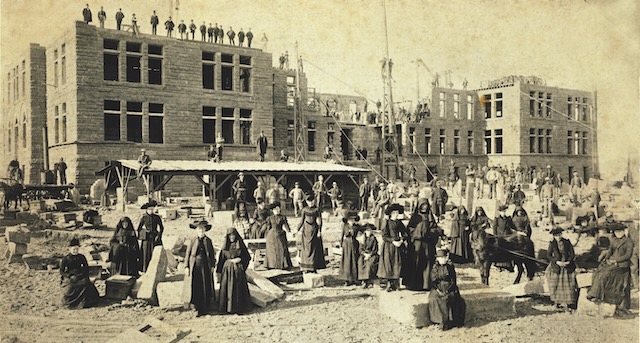
Photo courtesy of Loretto Archives
Extraordinary leadership
At times history takes unprecedented leaps forward, often as a result of the efforts of one person who came along at the right time and place. Praxedes Carty SL was one of those people whose boundless energy and vision meant she could work hard to resolve the pressing details of the moment while moving forward to fulfill the big picture. You could say Mother General Praxedes Carty, as she was known for her 26 years at Loretto’s helm (1896-1922), was a consummate multitasker. Her drive, her yen for action and can-do attitude led to perhaps the most significant accomplishments for the order during the early 20th century. It was Mother Praxedes’s firm belief that the best teachers are properly prepared to do the best job. She and other Loretto leaders at that time knew that if Loretto were to grow and evolve its teaching apostolate, Loretto sisters would need masters- and doctorate-level education and training. Universities in the U.S. during the 18th and 19th centuries had been almost exclusively the domain of men. At the start of the 20th century, however, admission for women became more common.
In their book, “Loretto in the Rockies,” Sisters Mary Celestine Casey and Mary Edmond Fern wrote:
When the Catholic University of America admitted the sisterhoods to the regular sessions, a fresh impetus was given to higher education. The example set by this institution was soon followed by many Catholic universities throughout the country. The Sisters of Loretto, like the members of other teaching communities, availed themselves of these educational opportunities that they might be better prepared for their profession.
In 1912 four Sisters of Loretto began coursework toward higher degrees at Catholic University. Meanwhile, Mother Praxedes felt that it was time to broaden the scope of the type of education Loretto could provide, and the plans to build a college began. Casey and Fern wrote:
With Mother Praxedes to plan and dream was to execute. To the astonishment of many of the sisters of her own community, her dreams and plans began to materialize in the college which she was erecting in Webster Groves, Mo.
Loretto College, the first such institution for women in the St. Louis area, opened in 1915. In 1924 the school was renamed Webster College to avoid confusion with Loretto Academy, a high school in St. Louis.
Mother Praxedes had the same conviction that an institution of higher learning should be established to educate young women in Colorado, and that it should serve the surrounding states. In 1918 Loretto Heights College opened on the site of Loretto Heights Academy (established in 1891) on a beautiful hill southwest of Denver. The college served both boarding and day students.
It would take much concerted effort in those early years to add new courses, staff the administration and faculty from the Sisters of Loretto, bring in priests and additional professors to augment the faculty, construct classrooms and develop the two new colleges into seats of educational excellence. But it was soon accomplished, and Webster and Loretto Heights began to graduate their first students.
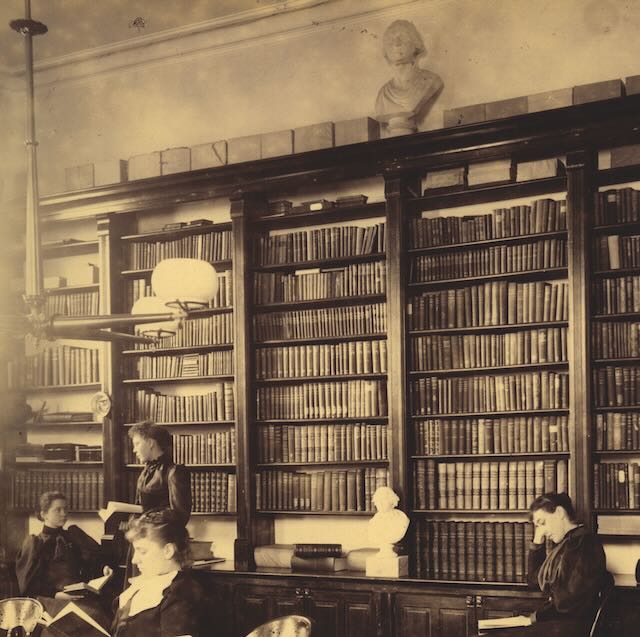
Photo courtesy of Loretto Archives
As the years went on, the ability to finance these colleges from within the Loretto Community became more and more difficult. For financial reasons, Loretto transferred ownership of Webster College to a lay board of directors in 1967, which is still the model today. The college is thriving as a private, nonprofit, nondenominational university. Loretto Heights was sold in 1988 and is being repurposed for multiple uses including affordable housing units.
So many Webster and Loretto Heights graduates continue to tell the sisters how much their Loretto education, and their favorite Loretto sister-teachers, meant to them, and of the positive influence their college years have made in their adult lives. Perhaps because they lived “the spirit of Loretto” and came to know those who lived that spirit, these graduates are among Loretto’s most loyal supporters today.
Loretto’s expansion into the realm of higher education has also left a permanent and enduring mark on the sisters and co-members. Intriguing stories abound from their years as teachers and professors. Community members still welcome the days with a powerful love of learning.
This article was originally published in Loretto Magazine in summer 2010 and has been edited.
Mother Praxedes Carty SL was acutely aware of the necessity to focus on higher education for the sister-teachers and encouraged the pursuit of advanced degrees. When Catholic University (soon followed by other Catholic institutions) opened courses to sisters in 1912, four Sisters of Loretto, including Miriam Judd SL, one of the three pictured below, began coursework toward higher degrees. They were groundbreakers, going on to generously share the fruits of their learning.
Loretto groundbreakers
To read all the articles in the Fall 2023 issue of Loretto Magazine, click here.

